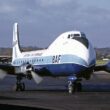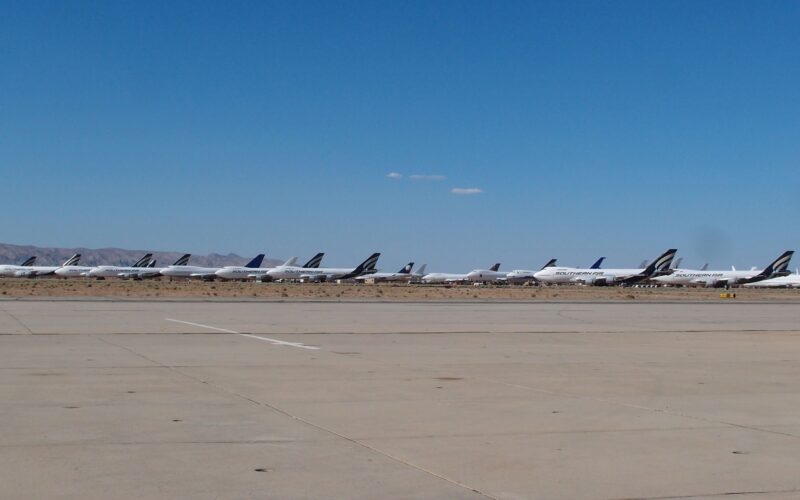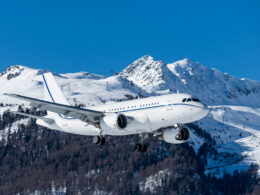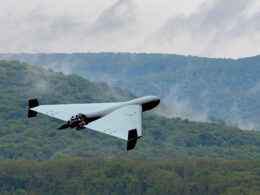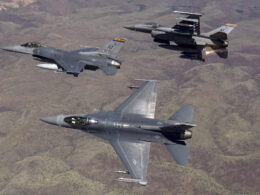Any aircraft, whether it is a commercial airliner or military cargo plane has a limited lifespan. The retirement of the civil aircraft usually turns into a celebration before their final flight. The airlines often put their final aircraft on a tour around the country or initiate the farewell international flight. It gives people the final opportunity to see the iconic aircraft in its authentic airline colors. But when the old machine’s engines stop and cool down for the last time, what happens next?
There are two ways of how airlines utilize retired planes. In case of a positive outcome, the old plane is put into the open air aviation museum, like the famous Concorde or Tupolev Tu-144. However, most of the retired planes spend their last days in so-called boneyards or graveyards.
The purpose of the aircraft boneyards and their location
An aircraft graveyard or boneyard is the place where planes go to rest after their service comes to an end. Sometimes the retired machines can get a second life under another airline name. However, most of the aircraft spend their last days in graveyards forever. The majority of the aircraft boneyards are used to store retired airplanes before their parts are removed for reuse or resale. Usually the disassembled airplanes are scrapped after such a procedure. The retired planes are crashed with excavators that can demolish a small plane like Boeing 737 in a couple of days. The bigger models might need a month of work.
Most of the graveyards are located in deserts, far outside people’s settlements. Dry air conditions and baking sun help to hold the corrosion of planes and the hard ground does not need to be paved. Most of the graveyards are closed for visitors and do not provide any tours.
Most of the biggest aircraft boneyards are found in the United States. There might be a few reasons why. First of all, even retired planes require a lot of work, time and, what is more crucial, space. There are acres of free open space in the south-western U.S. This region, with its dry climate, low humidity, and little rain, provides the perfect conditions for the old planes’ storage.
1. Davis-Monthan located nearby the Arizona city of Tucson.
This graveyard stores around 4,400 aircraft, arranged over nearly 2,600 acres (10.5 sq km). The facility workers call it simply Boneyard. The location is run by the 309th Aerospace Maintenance and Regeneration Group (309 AMARG). The graveyard gave shelter to different kinds of airplanes, including broken or retired B-52 bombers, B-29 Superfortresses, C-47 Skytrains, United Airlines Boeing 727-100, and many more. The majority of the preserved aircraft in the Davis-Monthan belongs to military aviation. The facility has controlled access, not permitted for visitors. The only access to the boneyard is via a bus tour. The tour begins nearby Pima Air and Space Museum and lasts about an hour. The bus stops at different locations of the Davis-Monthan, but no one is allowed off the bus.
2. Southern California Logistics Airport / Victorville (VCV)
The boneyard is located in the city of Victorville in San Bernardino County, in the Mojave Desert. A warm and dry climate here made it the perfect place to keep aging airplanes for extended periods. The airport’s longest runway is more than 15,000 feet long, capable of handling fully loaded 747s.
The Victorville graveyard is currently storing around 275 passenger and cargo aircraft. Numerous large ex-Orient Thai and British Airways Boeing 747, Singapore Airlines (SIA1) (SINGY) , Air New Zealand, and Cathay Pacific planes, older McDonnell Douglas DC/MD-10 and MD-11 freighters, Lockheed, and Airbus aircraft owned by major airlines are currently kept at Victorville.
3. Phoenix Goodyear Airport (GYR)
Following the end of World War II, the primary role of the GYR was to store and preserve U.S. Navy, U.S. Marine Corps, and U.S. Coast Guard aircraft. At some point, the facility stored more than 5,000 aircraft. By early 1958, the numbers decreased to 2,500 aircraft.
After the closure of NAS Litchfield Park in 1967, the City of Phoenix purchased the airport for a general aviation facility. Today, the airport offers aircraft maintenance, pilot training and stores such commercial planes like Boeing 737, Airbus A340 and Boeing 747s.
4. Tarmac aircraft boneyard, Teruel Airport, Spain
The Teruel Airport is located about 100 miles south of Zaragoza, Eastern Spain. Its location 1,000 meters above sea level and a cold, dry plain climate provide perfect conditions for the retired passenger airliners storage.
It was initially constructed to house commercial aircraft, including Boeing, Airbus, and Bombardier. Opened in 2013, the facility nowadays offers long-term aircraft parking, recycling, aircraft painting, aircraft assembly, and fitting-out services.
It is the biggest aircraft boneyard in Europe, designed to handle 250 large planes. After the air travel was put on hold due to the coronavirus pandemic, different European carriers, including British Airways, sent some of their Boeing 747s to Teruel for storage.
5. Khodynka Field, Domodedovo Airport, Russia
Initially built to service commercial flights, the airfield became one of the most popular aircraft boneyards in Russia. The last plane took off from here in 2003. Nowadays part of the aircraft has been scrapped. The machines that were better preserved are now in the Vadim Zadorozhny Museum of Technology. The vast territory of the aircraft boneyard on the Khodynka field is surrounded by barbed wire and guarded.

